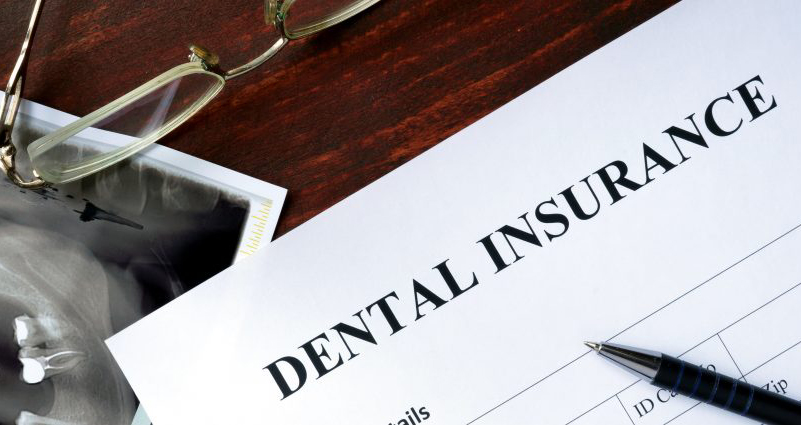Dental Insurance: Plan Comparison and Coverage Guide

Dental insurance is intended to help offset the costs associated with dental care. The mere thought of out-of-pocket expenses prevents many Americans from receiving routine and necessary dental treatment.
Today’s dental treatments range in cost from $300 per year for regular dental hygiene visits, to $25,000 or more for restorative dental procedures or cosmetic dentistry. Additionally, when compared with medical insurance coverage, dental insurance plans generally offer fewer benefits.
Dental Insurance Plans: What’s Available?
Various dental insurance plans are available for individuals in the U.S. and are designed to help offset the costs associated with necessary dental care. Plans have limitations on the number of dental visits, radiographs (X-rays) and treatments that are covered, and other services may be excluded. Some plans only reimburse patients when the least expensive treatment alternative is selected; other plans do not provide coverage for necessary treatments of pre-existing conditions.
You may not be aware that you have flexible spending account options available through your employer for dental or medical needs. Check with your employer to see if a flexible spending account is an option for you.
The types of dental insurance plans available include the following:
Dental Insurance Plan Choices:
- Indemnity Plan: An indemnity dental insurance plan allows you to select your own dentist. These plans are considered fee-for-service and come with limitations and co-payment options. This means that you pay a flat fee for the dental visit, but you have an annual limit on coverage for dental spending, and specific coverage limits may apply to individual dental procedures.
- Self-Insurance Plan: Self-insurance dental plans may be similar in nature to indemnity plans, but you might not be able to select your own dentist.
- Closed Panel Plan: Closed panel dental plans limit you to using a specific group of facilities and the number of dentists available to you.
- Capitation Plan: Capitation dental plans designate specific dentists for intervals of treatment. These dentists have a contract indicating that they will be paid a fee regardless of whether dental treatment was required.
- Preferred Provider Organization (PPO): PPO dental plans are limited to a group of dentists who are available to provide dental care at a reduced cost.
- Direct Reimbursement Plan: Direct reimbursement dental plans allow employers to directly reimburse employees for dental services they receive.
- Dental Care Service Plan: Dental care service plans use a group of dentists who form a non-profit organization to provide dental services at set fees.
What’s Covered by Dental Insurance?
If you have dental insurance, familiarize yourself with your plan so you know what is covered and how. For example, if you require a dental filling and would prefer a composite material, evaluate the benefits allocated in your plan for composite fillings. Many insurance companies will only reimburse composite filling costs at a rate equal to that of an amalgam filling. You would be required to pay the remaining balance as an out-of-pocket expense.
Cosmetic dental procedures are not typically covered by dental insurance. However, if you have insurance and require veneers for restorative purposes, ask your dentist about the possibility of filing for reimbursement for a percentage of the costs. Also, if you are undergoing a smile makeover that will involve multiple necessary treatments as prerequisites (e.g., root canals or orthodontic bite adjustments), some of those costs may be covered by insurance.
More often than not, the cost of cosmetic dentistry will not be offset by insurance.
It is important to ask the dentist’s finance manager about dental treatment costs prior to agreeing to and receiving treatment. Dental insurance plans differ in the level of reimbursement offered for certain procedures and in annual dental spending caps. Some plans limit the waiting period before certain dental treatments are rendered. Additionally, plans typically have exclusions, meaning that costs for certain dental procedures will not be reimbursed. Dental finance managers can call your insurance provider to pre-determine the out-of-pocket costs associated with your planned procedure.
Usual, Customary, and Reasonable (UCR) Fees
The most common term used by dental insurance companies on their Explanation of Benefits (EOB) statement to identify the fee for dental treatment is called Usual, Customary and Reasonable (UCR). UCR fees are determined by insurance providers based on the typical costs associated with various dental procedures.
For example, if your procedure costs $90, your dental insurance provider may have a UCR for the procedure of $60. You would therefore be responsible for paying the $30 difference as an out-of-pocket expense.
Next, go to:
- Fee for service dentistry
- Managing out-of-pocket dental expenses
- Medicare dental coverage and supplemental dental benefits
- Medicaid dental coverage and other assistance for disadvantaged people


